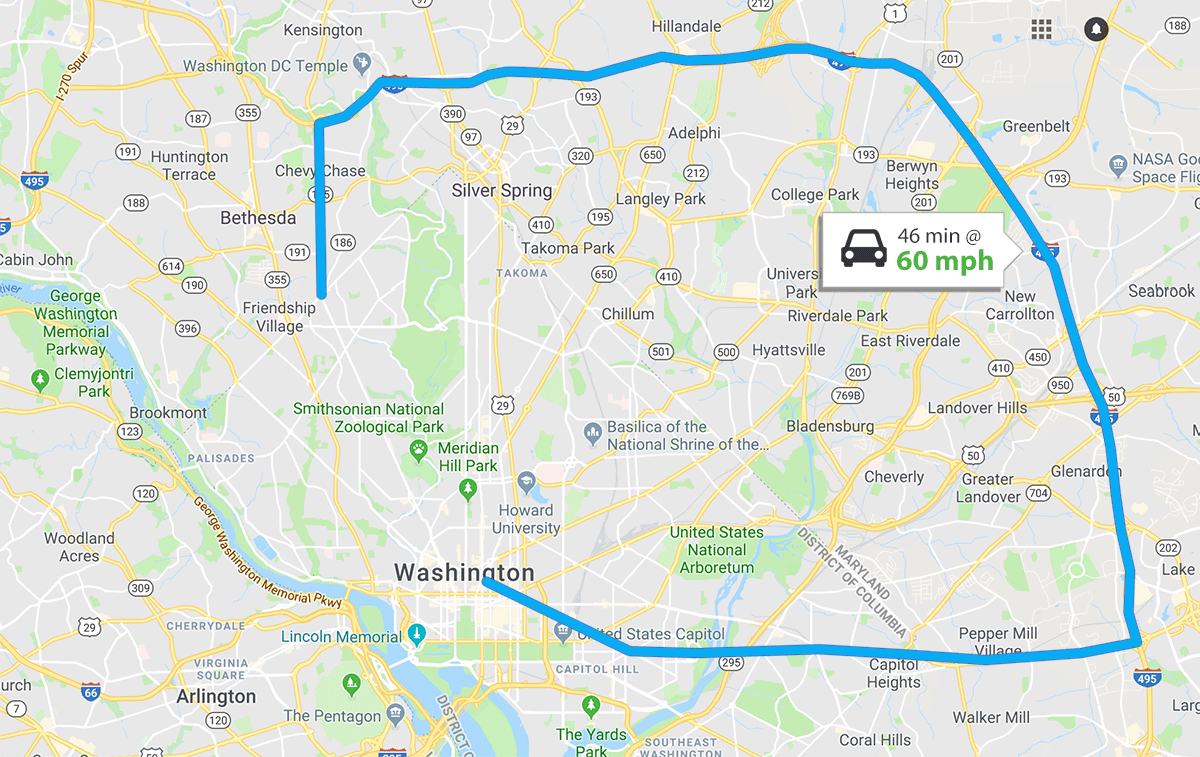Why don’t DOTs pick routes like we do?

Your GPS gives you the choice of two routes.
One would take 15 minutes, but you’d travel at only 20 miles per hour. One would take 46 minutes, but you’d get to travel at 60 miles per hour. Which do you pick?
We’d pick the 15 minute trip, every time. This seems basic to anyone who has used a smart phone. But DOTs have long used travel speed as a (poor) proxy for how efficiently things are moving, partially because, for decades, it has been nearly impossible to measure every trip taking place within a city or a transportation system.
But it’s not 1950 anymore. New technologies can tell us where trips happen and how long they take, and empower travelers to choose a variety of routes spread between driving, walking, biking, and transit.
DOTs must learn to use the same approach, and at Capital Ideas 2018, we’ll be talking about how DOTs can measure system success in new ways.
Most DOTs measure the functionality of their transportation system using a standard called Level of Service or “LOS”. We explained a lot of the problems with LOS back in 2016. The short answer is that measuring the wrong thing leads to the wrong outcomes. Focusing on speed would mean making every road as wide and straight as possible — but no community wants all its roads to be freeways. Residential streets and local roads work just fine, but DOTs haven’t had a good way to measure that — until now.
“Measuring Access to Jobs and Necessities,” a panel on December 6 during Capital Ideas, will discuss publicly for the first time a new set of metrics that can help DOTs understand travelers’ needs more comprehensively.
Register today to be among the first to learn about these new metrics. You’ll hear from three transportation agencies that are among the first putting this measure into practice.
Here at T4America we often say “we measure what we treasure.” What we treasure is transportation options that support regional economies and strong communities in addition to moving fast. We hope you’ll join us to discuss making them happen.



















